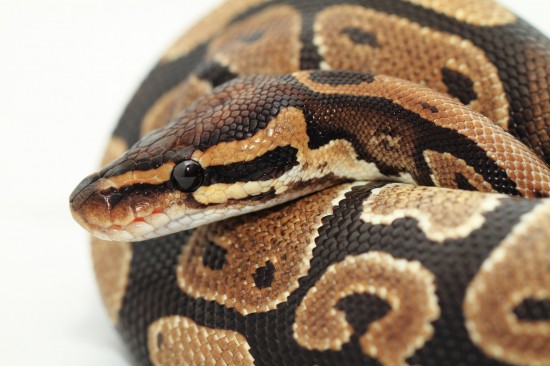
Cushings disease in dogs is a very common, yet very misunderstood canine health disorder. In this article I will explain what canine Cushings disease is, the causes, the common clinical signs, and what tests are best to diagnose it. Then you'll see the most important conventional and holistic options used to treat Cushings.
Cushings disease is an overproduction of a hormone (cortisol) which produces the signs of excessive drinking and urinating; the veterinary term is hyperadrenocorticism. Cortisol is produced by the adrenal gland, and is usually released during times of stress (ie fear). The cortisol alters the metabolism, preparing for 'fight or flight', by releasing fat, sugar and keeping in water/sodium. When this occurs over time, your pet's body is seriously affected resulting in many of the clinical signs, such as muscle wasting.
Cushings disease is most often seen in small breed, older dogs. The biggest clinical signs are increased drinking and urinating excessively. Most dogs have a distended, swaying belly; the excess cortisol causes loss of abdominal muscle. Many dogs have skin changes seen as hair loss and a sparse hair coat, at times the hair loss is symmetric. In most dogs there is an increased, appetite, and excessive panting. These dogs typically have been tested for other causes of increased drinking (including diabetes, kidney and liver disease) and all tests have come back negative.
The most common cause is due to a tumor on the pituitary gland (a gland at the base of the brain). A small percentage of cases are caused by a tumor on the adrenal gland (a gland in the kidneys). In some cases, pets can get all these signs by being on steroids, such as prednisone. In this case, the treatment is to wean the pet off the drug.
The most useful diagnostic test your veterinarian can perform is called the low dose dexamethasone suppression test. This is the most accurate in confirming Cushings disease- about 90% of dogs will test positive. Normally if you give dexamethasone to a healthy dog, the pituitary gland will sense this, and you will see a drop in blood cortisol. In a dog with Cushings disease, ( usually a pituitary tumor), there is no drop in blood cortisol 8 hours after giving the injection.
The major part of diagnosis is differentiating between pituitary Cushings disease, and adrenal tumor as the cause. This is important to know, because treatment is very different for each type. If there is an adrenal tumor is present, there is a 50% chance of it being a malignant; surgery is an option in that the tumor may be removed. If the cause is pituitary, then medical options are the treatment of choice.
There are primarily two conventional options to consider in treating your dog for Cushings disease. Lysdoren is an older, cytotoxic drug which destroys part of the pituitary gland. It has serious side effects, and if given as an overdose it can give your dog a condition called Addisons disease. Trilostane is the newer drug that is treating dog Cushings disease with fewer side effects. It works by inhibiting adrenal enzymes, lowering the blood cortisol. Both drugs require that your dog take them regularly , and that there is regular monitoring by your veterinarian.
Anipryl, or L-deprenyl is a newer safe medication to treat the disease. It is available from your veterinarian. It must be given daily, and can be quite costly to treat a large dog. It works directly on the pituitary gland helping to decrease cortisol production.
In Cushings, the cells are more prone to injury from the high cortisol levels. The three most effective antioxidants are Vitamin E, Vitamin C and Selenium. These are best given in combination: give 100 IU of Vitamin E, 100 mg of Vitamin C and 20 ug if Selenium per 10 lbs of body weight daily.
A herb called Ginkgo Biloba has been shown to reduce cortisol production, similar to Anipryl. The dose of the tincture is one drop per lb of body weight twice daily. The dried concentrated extract is also available, give 3 mg per lb of body weight daily. Another herb called valerian can be very helpful. High cortisol levels will make your pet feel anxious. Valerian is great at decreasing anxiety levels. The dog dose is 1 drop per lb of body weight twice daily.
Now you should understand exactly what Cushings disease in dogs is, the causes, plus the common clinical signs: increased drinking, increased urination, and increased appetite. The most effective diagnostic test is the low dose dexamethasone suppression test, being 90% accurate. The best conventional treatment is a newer drug called trilostane, while the most useful holistic option is a herb called Ginkgo Bilboa.
Dr Andrew Jones is the author of a NEW Free Ebook, Dog Health Secrets, which gives you over 100 safe, natural and effective at home remedies to solve your dog's health problems quickly and easily at home. He reveals what Vaccines to AVOID and what to give, The BEST food to feed, plus HOW to save money on veterinary fees. Go to: Dog Health Secrets Book
 Breeding Cats - Keeping A Stud Cat
Breeding Cats - K
Breeding Cats - Keeping A Stud Cat
Breeding Cats - K
 Kitten Emergencies - Signs To Look Out For
Kitten Emergencie
Kitten Emergencies - Signs To Look Out For
Kitten Emergencie
 Cat's Immune System - A Brief Review And Solutions
A cats healthy immune system is very import
Cat's Immune System - A Brief Review And Solutions
A cats healthy immune system is very import
 Caring For Your Rabbits During The Winter
Caring For Your R
Caring For Your Rabbits During The Winter
Caring For Your R
 Retained Eye Caps In Snakes Explained
Retained Eye Caps
Retained Eye Caps In Snakes Explained
Retained Eye Caps
Copyright © 2005-2016 Pet Information All Rights Reserved
Contact us: www162date@outlook.com